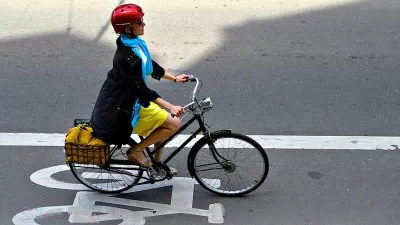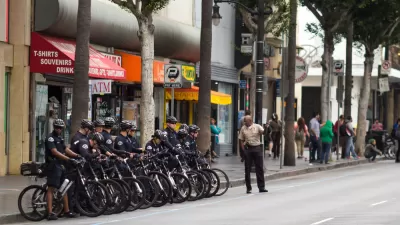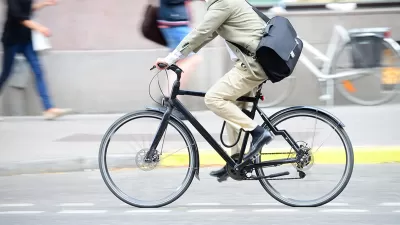Researchers in the United Kingdom have found that people who live near bike lanes are more likely to exercise—45 minutes more exercise per week, in fact.

The study, conducted by the MRC Epidemiology Unit at the University of Cambridge, and published in the American Journal of Public Health, makes a compelling case for the public health benefits of wide-spread investment in bicycle infrastructure, according to an article by Sarah Barth.
The study examined three cities—Cardiff, Warwickshire, and Southampton—finding, "[those] living 0.6 miles from the new routes were found to do more walking and cycling - around 45 minutes per week. Those 2.5 miles away did not."
The study also finds evidence of the net positive benefit of the bike facilities for those who live nearby: "The study also found that the increase in walking and cycling was not offset by a reduction in other physical activity."
Dr. Anna Goodman, lead author of the study is quoted explaining the implications of the study: "The fact that we showed an increase in overall levels of physical activity is very important, and shows that interventions of this sort can play a part in wider public health efforts to prevent diabetes, heart disease and other chronic conditions."
FULL STORY: People living near cycle paths get 45 minutes' more exercise overall every week

Planetizen Federal Action Tracker
A weekly monitor of how Trump’s orders and actions are impacting planners and planning in America.

Map: Where Senate Republicans Want to Sell Your Public Lands
For public land advocates, the Senate Republicans’ proposal to sell millions of acres of public land in the West is “the biggest fight of their careers.”

Restaurant Patios Were a Pandemic Win — Why Were They so Hard to Keep?
Social distancing requirements and changes in travel patterns prompted cities to pilot new uses for street and sidewalk space. Then it got complicated.

Platform Pilsner: Vancouver Transit Agency Releases... a Beer?
TransLink will receive a portion of every sale of the four-pack.

Toronto Weighs Cheaper Transit, Parking Hikes for Major Events
Special event rates would take effect during large festivals, sports games and concerts to ‘discourage driving, manage congestion and free up space for transit.”

Berlin to Consider Car-Free Zone Larger Than Manhattan
The area bound by the 22-mile Ringbahn would still allow 12 uses of a private automobile per year per person, and several other exemptions.
Urban Design for Planners 1: Software Tools
This six-course series explores essential urban design concepts using open source software and equips planners with the tools they need to participate fully in the urban design process.
Planning for Universal Design
Learn the tools for implementing Universal Design in planning regulations.
Heyer Gruel & Associates PA
JM Goldson LLC
Custer County Colorado
City of Camden Redevelopment Agency
City of Astoria
Transportation Research & Education Center (TREC) at Portland State University
Camden Redevelopment Agency
City of Claremont
Municipality of Princeton (NJ)




























